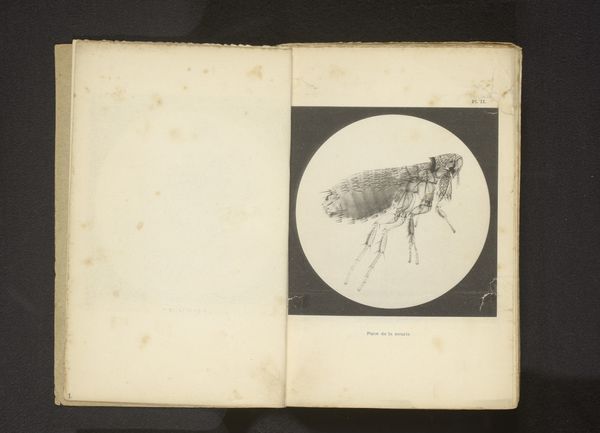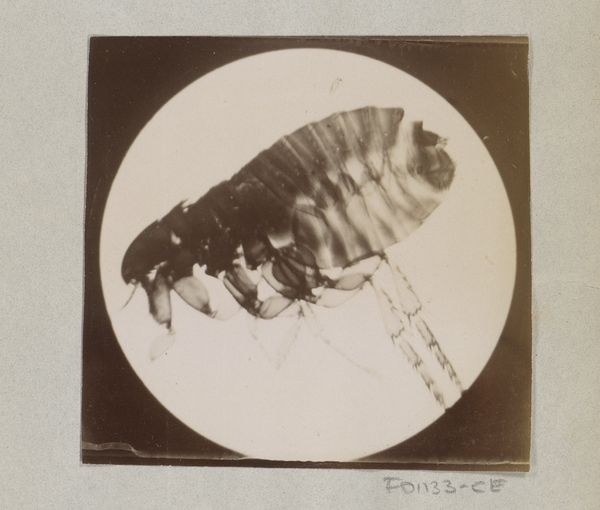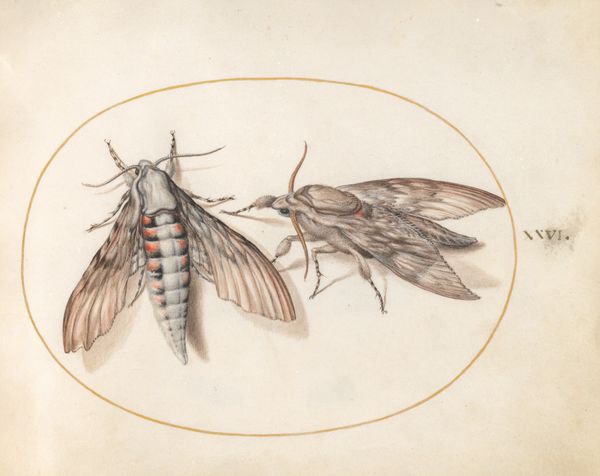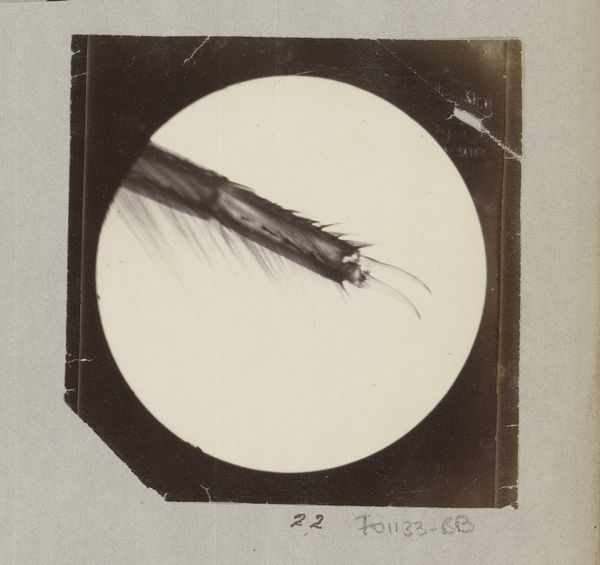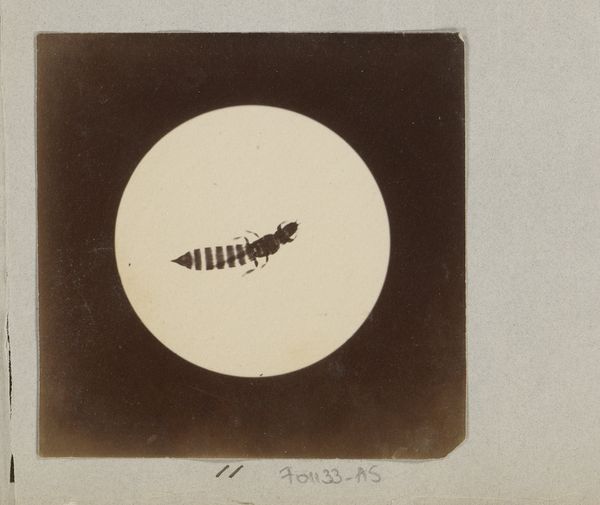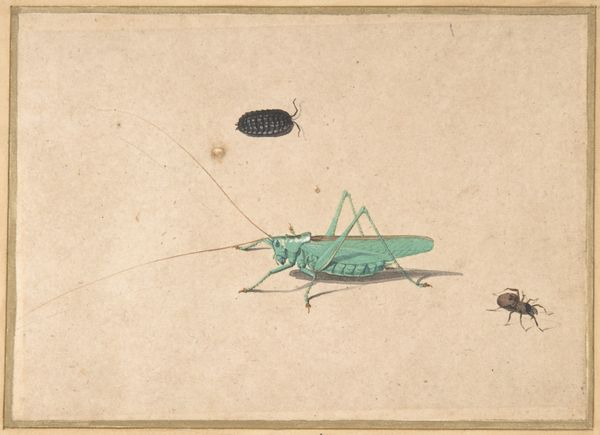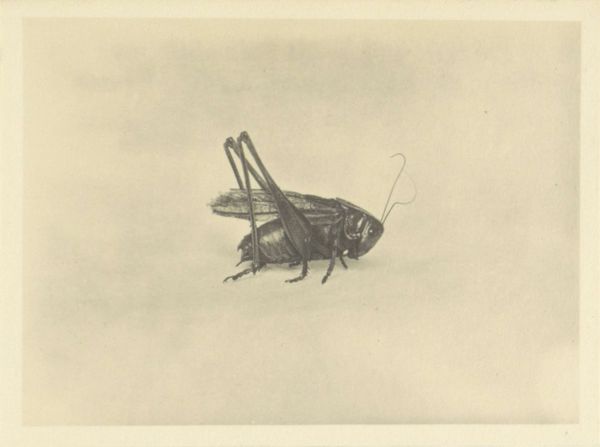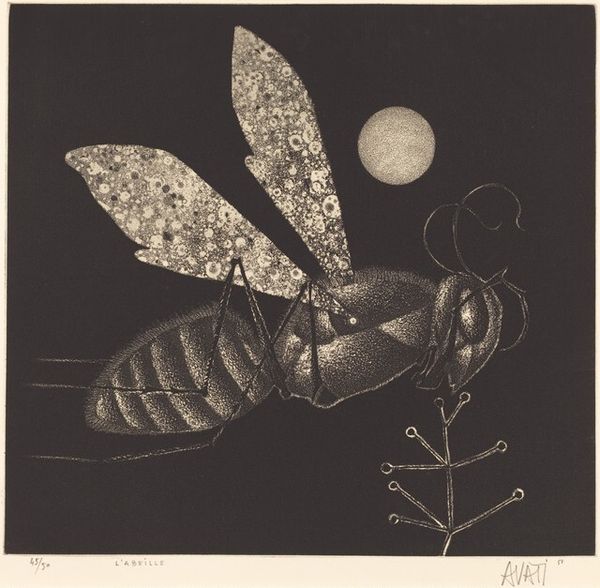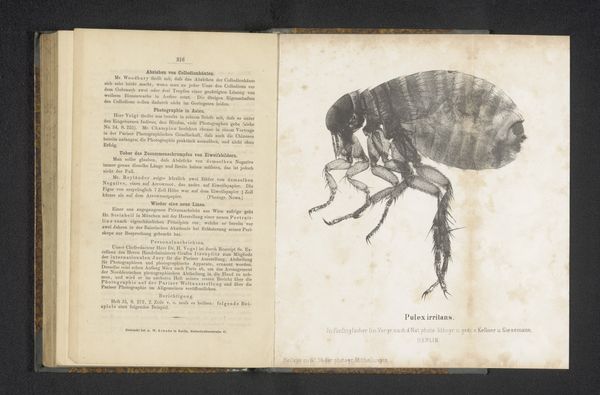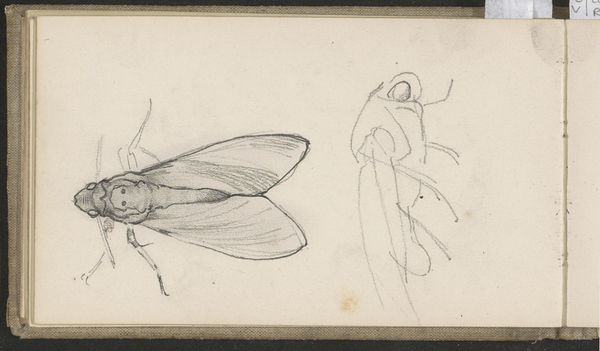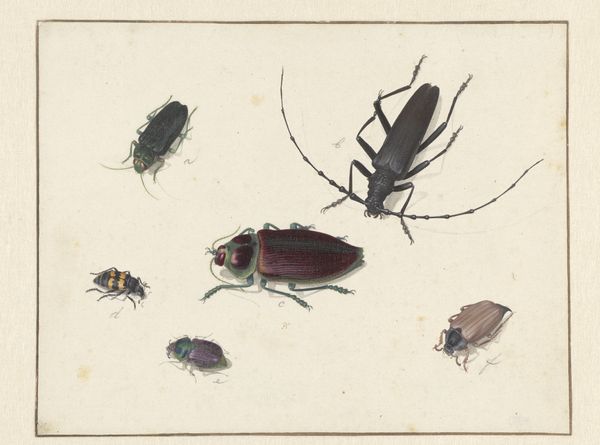
drawing, pencil
#
drawing
#
pencil sketch
#
coloured pencil
#
pencil
#
academic-art
Dimensions: height 87 mm, width 89 mm
Copyright: Rijks Museum: Open Domain
Editor: Here we have Marinus Pieter Filbri’s "Microscopic Image of a Chicken Louse, Enlarged 25 times," created between 1887 and 1888 using pencil and colored pencil. It's striking how clinical it feels, almost like a scientific diagram, yet it's clearly an artwork. What's your take on this piece? Curator: It’s fascinating how Filbri's work sits at the intersection of art, science, and public education. The late 19th century saw a growing interest in microscopy and its potential to reveal the unseen world. This drawing, then, participates in a larger cultural moment where scientific discovery was being popularized. The clinical aesthetic you mention reinforces the supposed objectivity of scientific observation, but is it really objective? Editor: That’s a great point! I hadn't considered how “objectivity” itself is a construct. Were these types of images common in public life at the time? Curator: Indeed. They were circulated through scientific publications, educational posters, and even popular entertainment like magic lantern shows. Visual culture was key in disseminating scientific knowledge, shaping public perception, and establishing institutional power. Who got to look through the microscope and who decided what was worth drawing and showing? Editor: So, the seemingly neutral act of depicting a chicken louse under magnification carries all these social implications about who controls knowledge. Curator: Precisely. And consider where such an image might have been displayed - perhaps in a classroom, a museum display on hygiene, or even in a manual about poultry farming. The location informs how its viewed. What did you think about its aesthetic appeal, though? Editor: I was so caught up in the implications that the art kind of receded. This image makes me consider all those layers of meaning within a seemingly straightforward image. Thanks! Curator: My pleasure. Examining those intersections reveals how art both reflects and actively shapes cultural values.
Comments
No comments
Be the first to comment and join the conversation on the ultimate creative platform.
